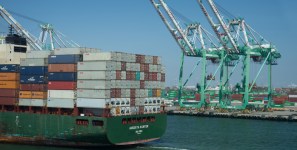Ammonia: The Future Fuel for Net-Zero Shipping, But Safety Hurdles Remain
As the maritime industry races to meet the ambitious decarbonization goals set by the International Maritime Organization (IMO), ammonia is emerging as a frontrunner for zero-emissions ocean transport. A survey conducted by the Mærsk Mc-Kinney Møller Center for Zero Carbon Shipping (MMMCZCS) reveals that 58.6% of maritime professionals are ready to embrace ammonia-fueled vessels—but significant challenges remain.
IMO’s Greenhouse Gas Strategy: Pushing Toward Zero Emissions
The IMO’s 2023 Greenhouse Gas (GHG) Strategy sets a 40% carbon intensity reduction target by 2030 and aims for net-zero emissions by 2050. To achieve these objectives, the industry is actively exploring alternative fuels, with ammonia gaining momentum as a viable solution for decarbonizing shipping.
Safety and Training: The Biggest Roadblocks
While the survey results indicate growing acceptance of ammonia as a fuel, safety concerns are a major sticking point. Respondents stressed that the toxic nature of ammonia requires new safety measures, including specialized ship designs and reliable onboard fuel systems. One participant noted, “Comprehensive training and certification are non-negotiable for the acceptance of ammonia as a marine fuel.”
Training gaps highlighted in the survey range from understanding ammonia’s impact on health and the environment to emergency response protocols and technical handling procedures. Developing these skills across the workforce is critical for a safe transition.
Regulatory Readiness and Industry Preparedness
The survey also underscores the need for proactive regulatory frameworks. Maritime professionals are urging authorities to develop timely regulations to protect seafarers from the risks associated with ammonia. In response, the MMMCZCS is working on updating the International Code of Safety for Ships Using Gases or Other Low-flashpoint Fuels (IGF Code) and revising the STCW training requirements to address ammonia-specific risks.
Navigating the Path Forward
The willingness of maritime professionals to adopt ammonia, despite safety concerns, is a positive sign for the industry. The survey findings will guide the design of ammonia-ready ships and onboard systems, shape training programs, and inform regulations for safe bunkering and port operations.
While ammonia holds promise as a key player in the industry’s decarbonization journey, the path to widespread adoption will depend on addressing safety, regulatory, and training challenges head-on. With coordinated efforts across the sector, ammonia could propel shipping toward a greener, net-zero future.





Leave a Reply